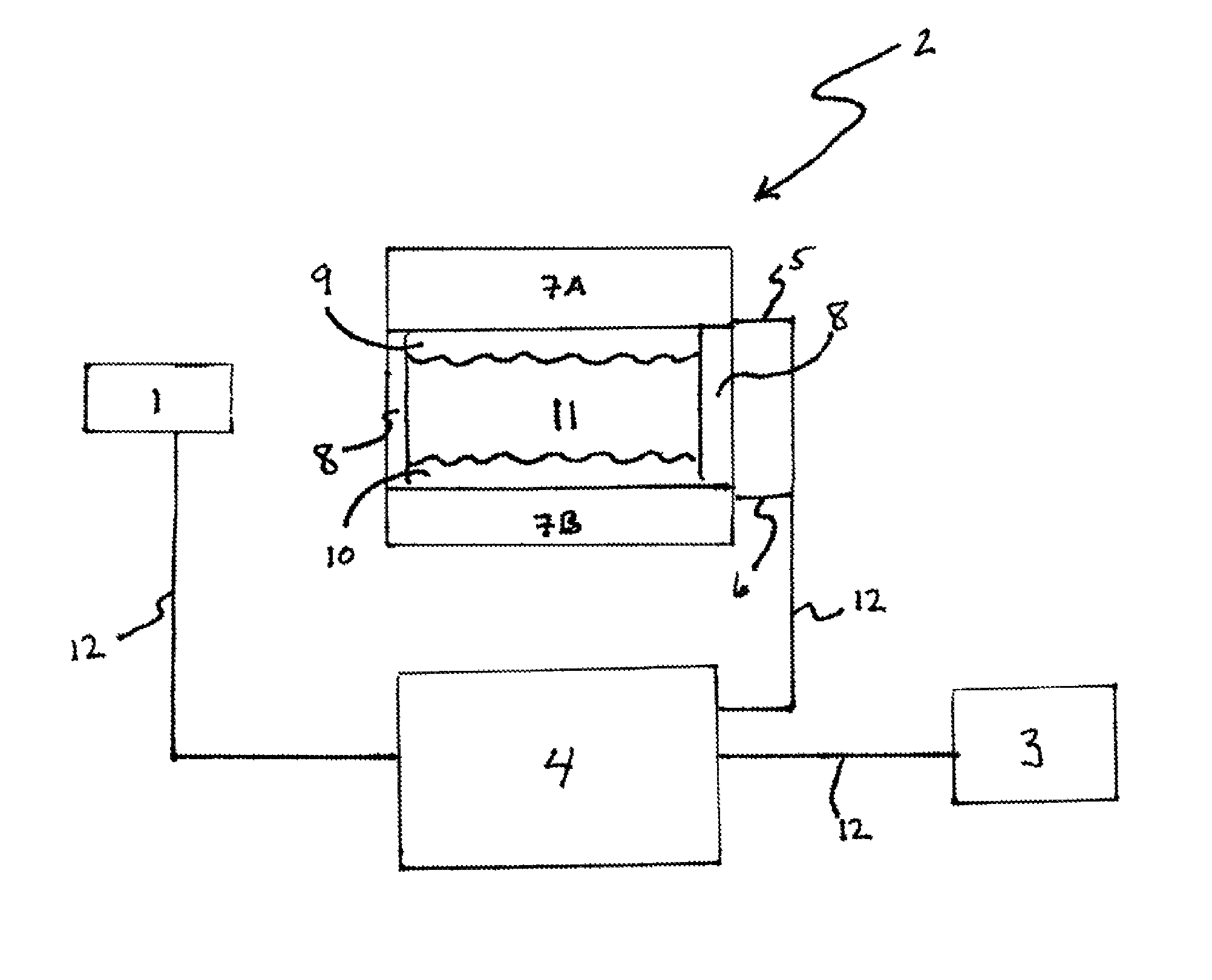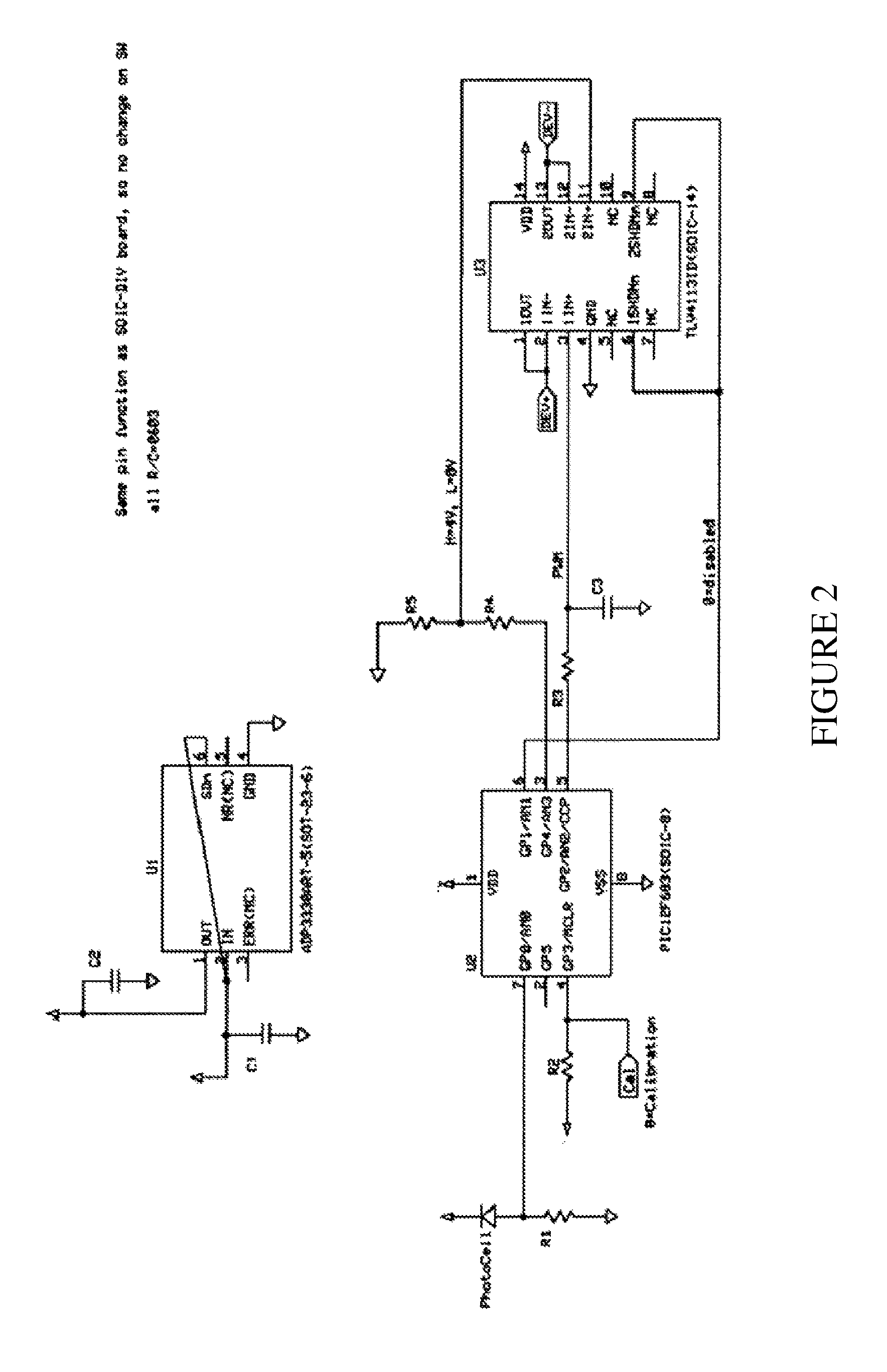Method and apparatus for control of electrochromic devices
a technology of electrochromic devices and control methods, applied in the direction of instruments, spectacles/goggles, optics, etc., can solve the problems of device degradation, damage and cessation of device function, and irreversible oxidative or reductive degradation, so as to increase the switching speed and reduce the electrochromic switching time
- Summary
- Abstract
- Description
- Claims
- Application Information
AI Technical Summary
Benefits of technology
Problems solved by technology
Method used
Image
Examples
example 1
[0081]An electrochromic device was prepared utilizing a cathodically coloring conducting polymer that includes the monomer 2,2-bis(4-chlorobenzyl)-3,4-propylenedioxythiophene and an anodically coloring conducting polymer that includes the monomer N,N′-diphenyl benzidine. Regarding the properties of the electrochromic device described above, the typical transmission (% T) spectrum, in the UV-Vis-NIR region, of such device is disclosed in FIG. 4.
[0082]Additionally, a cyclic voltammogram (CV) of the electrochromic system is disclosed in FIG. 5, taken at a very slow scan rate (10 mV / s); this CV is of an exemplary electrochromic lens in 2-electrode mode, i.e. with no reference electrode. The highly reversible nature of the redox behavior for this system is demonstrated herein. Indeed, the primary and secondary voltammetric peaks responsible for the electrochromism, [primary at about +250 mV (oxidation, (−) current) about +200 mV (reduction, (+) current), secondary at about −850 mV (oxida...
example 2
[0085]In practice of the present invention, the photosensor readings, which may be in mV corresponding to particular light levels, may be used as key inputs by the programs of the invention in determining how to drive the electrochromic device, i.e., what voltages to apply and for what duration. For this purpose, the programs of the invention may be associated with a lookup table that may be held in the controller 4 or, more specifically, the microcontroller. A representative look up table is provided herein as Table 1.
[0086]At a reference light level, the reference voltage may be calibrated to 2.5 V; the calibration factor is saved to an EEPROM inside the microcontroller. During normal operation, the photocell voltage (Vpc) is calibrated with the saved calibration factor. The device voltage (Vdev) is adjusted based on the programs of the invention including A, B, C, and D. Vdev is adjusted in steps of 0.25V. (see, for example, FIG. 7).
[0087]
TABLE 1A Representative Look-Up TableVpc ...
example 3
[0088]Demonstrating the differences between the application of the programs of the invention in comparison to the use of a potentiostat, an examination of switching times may be observed (FIG. 8). Indeed, FIG. 8 demonstrates a comparison of the switching time using a steady DC voltage, as applied from potentiostat (or a DC power source), and that obtained using programs A and C (used as examples). The switching time is reduced, from approximately 8 s for the potentiostatic DC voltage to less than 1 s for program C. As set forth above, the switching time is defined customarily as the time for transition between 10% and 90% of the maximum and minimum % T, and the above values are measured using this definition. Additionally, FIG. 9 demonstrates the long term cyclability, at 0 and 10,000 cycles between light and dark states, using program C. There is almost no effect on the electrochromic switching characteristics and stability of the system, even though an overvoltage of ±3.0 V has be...
PUM
| Property | Measurement | Unit |
|---|---|---|
| applied voltage | aaaaa | aaaaa |
| applied voltage | aaaaa | aaaaa |
| molar ratio | aaaaa | aaaaa |
Abstract
Description
Claims
Application Information
 Login to View More
Login to View More - R&D
- Intellectual Property
- Life Sciences
- Materials
- Tech Scout
- Unparalleled Data Quality
- Higher Quality Content
- 60% Fewer Hallucinations
Browse by: Latest US Patents, China's latest patents, Technical Efficacy Thesaurus, Application Domain, Technology Topic, Popular Technical Reports.
© 2025 PatSnap. All rights reserved.Legal|Privacy policy|Modern Slavery Act Transparency Statement|Sitemap|About US| Contact US: help@patsnap.com



